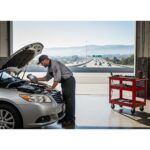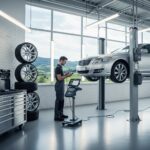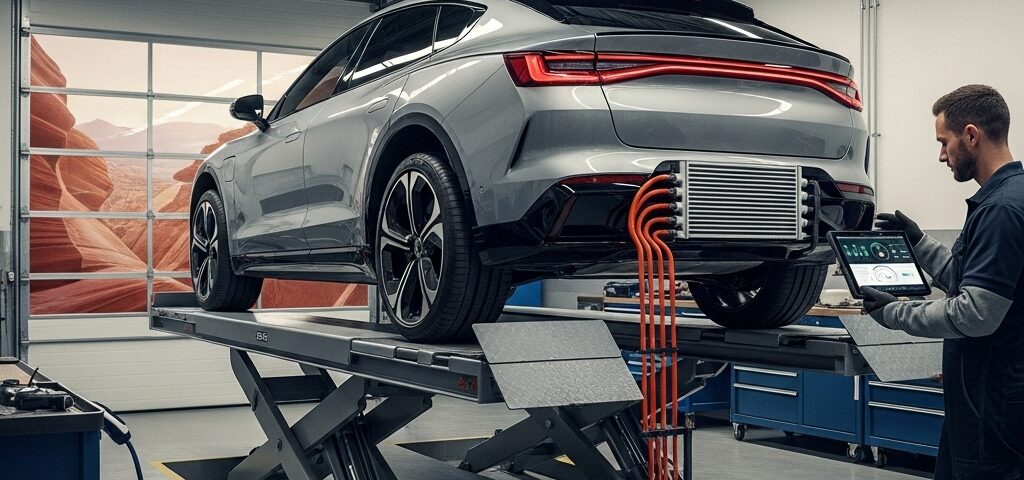
Auto Repair For Daily 101 Commutes In Thousand Oaks California
October 23, 2025
European Auto Repair Specialists In Thousand Oaks California
October 23, 2025Hybrids and electric vehicles have become a familiar sight on the 101 through Thousand Oaks, gliding silently past Westlake Boulevard in the early morning, or easing down the Conejo Grade toward the coast with seamless regenerative braking. In our community, where families split time between school drop-offs, canyon weekends, and regular commutes over the hill, hybrids and EVs make practical sense. What’s changed is how we care for them. The fundamentals are the same—safety, reliability, comfort—but the details demand a shop that understands high-voltage architecture, software, cooling strategies, and the subtle ways a car communicates with you. As a local technician who has logged thousands of diagnostic miles between Newbury Park and Agoura, I’ve learned that the best hybrid and EV service combines modern tools with a neighborhood mindset. If you’re beginning your research for a trusted partner, here’s a solid resource to explore: this Auto Repair can help you orient quickly.
Driving in the Conejo Valley presents a wonderful laboratory for hybrid systems. The rolling topography and predictable traffic patterns let regenerative braking harvest energy efficiently, while sustained climbs test cooling loops for batteries and inverters. Owners notice the benefits at the plug and the pedal: more range on familiar routes, smoother brake feel, and a cabin that stays quiet even when the freeway gets hectic. The goal of good service is to keep those benefits consistent, season after season.
Understanding your hybrid or EV’s unique systems
Unlike traditional vehicles, hybrids and EVs rely on several thermal management circuits. Batteries may have dedicated liquid cooling or carefully ducted airflow. Inverters, onboard chargers, and DC-DC converters depend on temperature control to operate within narrow efficiency windows. A technician trained to read these systems will evaluate not only coolant level but also pump command, valve position, and the health of sensors that feed the control modules. In Thousand Oaks, where afternoon temps spike and then fall as marine air rolls in, the system’s ability to stabilize quickly matters more than a simple static reading.
High-voltage (HV) safety is non-negotiable. Proper lock-out/tag-out procedures, insulated tools, and personal protective equipment protect both technician and vehicle. But safety isn’t just about the moment of service; it’s about clarity for the owner as well. We explain what we’re doing and why, whether it’s isolating the HV battery for a contactor inspection or monitoring insulation resistance to ensure there are no stray paths that could trigger error codes or limp modes later.
Real-world diagnostics on local roads
Lab tests are useful, but Thousand Oaks roads provide the real proof. We verify transitions from electric to engine power along Moorpark Road and evaluate regenerative braking effectiveness on the long descent toward Calabasas. On Potrero Road’s gentle curves, we listen for subtle bearing tones that are more apparent in the near-silence of an EV cabin. Software logs give us data—battery state of health, motor temperature deltas, inverter efficiency—while the road test translates that data into feel. For you, that means no surprises at the pedal, consistent range estimates, and confidence that the car will behave predictably during your daily routine.
Owners often ask about range swings. In our microclimate, it’s normal to see estimates shift between cool mornings and hot afternoons. Cabin preconditioning habits, tire pressures, and accessory use can move the needle more than most drivers realize. A methodical inspection includes tire calibrations set when the vehicle is cool, software updates that refine thermal control, and advice on charging practices that suit your lifestyle rather than a one-size-fits-all rulebook.
Brake systems and regenerative feel
Hybrids and EVs change how you think about brakes. The pads and rotors still do the final work, but much of your deceleration happens through regeneration. In practice, that can lead to glazing, corrosion, or uneven pad deposits when the friction brakes go unused for long stretches. Thousand Oaks’ stop-and-go near the Hampshire Road ramps in the evening can flip that script and ask the friction brakes to take over abruptly. We evaluate not only pad thickness and rotor condition but also the brake-by-wire calibration, ensuring smooth torque handoffs. A clean, confident pedal makes the car feel premium and helps you trust the system during sudden stops.
Brake fluid service matters here, too. Moisture content reduces boiling point over time. Although EVs generate less heat in their friction systems day-to-day, the big downhill into Camarillo or the occasional emergency stop can reveal a weak fluid. We test and refresh according to the manufacturer’s interval and local conditions, keeping the system’s safety margin strong.
Battery health and longevity in the Conejo climate
Nothing influences an EV owner’s peace of mind more than battery health. While individual modules and chemistries vary, the themes are consistent: temperature control, charging habits, and balanced loads. In warmer months, we pay special attention to coolant condition in liquid-cooled packs, verify pump sequencing, and confirm that the chillers and valves move as commanded. We also look for cabin air filter restrictions that can affect HVAC performance, because climate control is one of the largest energy draws and interacts with battery thermal management.
Charging behaviors are personal. Some folks top off nightly; others prefer deeper cycles. The right answer takes your commute length, garage setup, and weekend habits into account. We can help tailor an approach that keeps the battery in its comfort zone without making your life complicated. Software updates from the manufacturer often refine charging curves and preconditioning logic, and staying current can yield tangible improvements in range stability and battery longevity.
Suspension, tires, and the quiet ride
EVs are quieter inside, which makes any rattle or vibration more noticeable. Heavier battery packs also ask more of tires and suspension. On the smooth sections of the 101, an EV should glide; if you feel a thrum at specific speeds, it may be a tire with uneven wear from high torque launches or a wheel bearing that has begun to sing. We use sensitive NVH tools and our ears—honed over years on the same test loops—to separate harmless road texture from issues worth addressing. Correct tire pressures, rotations tailored to weight distribution, and alignments that account for instant torque help keep the ride serene.
Suspension bushings and struts live a different life in an EV. They carry more mass and deal with that gentle but constant push-pull of regenerative braking. Proactive inspections catch fluid seepage in dampers and micro-cracks in bushings before they translate into steering wander on the curve past Lakeview Canyon.
Software and updates: the invisible service
One of the biggest shifts in EV and hybrid care is software. Updates can alter the character of acceleration, improve HVAC efficiency, and even refine the way the car estimates range. We integrate software checks into service visits so you leave with a car that not only has fresh hardware but also the latest calibrations. When a manufacturer issues a service campaign, we coordinate so your time is respected and your vehicle’s systems remain in harmony.
For plug-in hybrids, the conversation includes engine oil changes and transmission fluid strategies that acknowledge infrequent engine use. An engine that only wakes for uphill merges or cool mornings needs clean oil, and in our terrain, the transmission experiences both electric torque and traditional loads during the same commute. We schedule accordingly, so your maintenance aligns with how you drive rather than how a generic schedule assumes you drive.
Local support with a neighbor’s touch
Our shop culture is rooted in Thousand Oaks. We know the school calendars that change traffic by the week, the summer heat that presses into evening, and the early fog that makes silent cars even harder to hear at crosswalks. We road-test where you drive and explain what we find in everyday language. If you prefer text updates while you’re at work, we’ll send photos and notes. If you want to swing by after a gym session at lunch to see a worn bushing or a brake rotor in person, we’ll have it ready on the bench. When you’re comparing options, it’s helpful to scan resources like this Auto Repair to frame your questions and understand what a complete EV or hybrid visit should include.
Frequently Asked Questions
Q: How often should I service a hybrid or EV in Thousand Oaks? A: Follow manufacturer intervals, but consider a seasonal inspection before summer heat and after it ends. Our climate shifts test thermal systems and tires in particular, so periodic checks keep everything balanced.
Q: Do EVs really need brake service if regeneration does most of the work? A: Yes. Pads and rotors can glaze or corrode when underused, and brake fluid still absorbs moisture over time. Regular inspections ensure smooth, confident stopping and reliable ABS/ESC performance.
Q: Why does my range vary so much day-to-day? A: Temperature, elevation changes, tire pressure, and HVAC use all influence range. We verify tire calibrations, software versions, and cooling operation, then tailor charging and preconditioning advice to your routine.
Q: Is it safe to wash an EV’s undercarriage? A: Professional car washes designed for modern vehicles are safe. What matters more is ensuring splash shields are intact and drains are clear so water doesn’t linger where cooling lines or harnesses run.
Q: Can you diagnose a faint hum at highway speed in an EV? A: Absolutely. The quiet cabin makes diagnosis easier. We use road-tested procedures and NVH tools to pinpoint tire, bearing, or drivetrain noise quickly.
Q: How do software updates affect my driving experience? A: Updates can refine throttle mapping, climate efficiency, and charging behavior. We review release notes with you so you understand what changed and why it matters.
Q: What about high-voltage battery replacement—should I worry? A: Modern batteries are robust. If capacity drops outside normal expectations, we document state of health, verify thermal systems, and present options clearly. Many concerns can be addressed without replacement.
Q: Do plug-in hybrids need special maintenance? A: They blend EV and traditional care. Oil services may be time-based due to infrequent engine use, and brake inspections focus on ensuring smooth handoffs between regen and friction.
If your hybrid or EV feels a little less crisp than it used to, or if you’d simply like a baseline inspection before the next season sets in, we’re here with the training, tools, and local road knowledge to make ownership easy. Reach out today, tell us about your routes and charging setup, and we’ll build a service plan that fits your life. To take the first step with a trusted local resource, follow this Auto Repair and get in touch.


